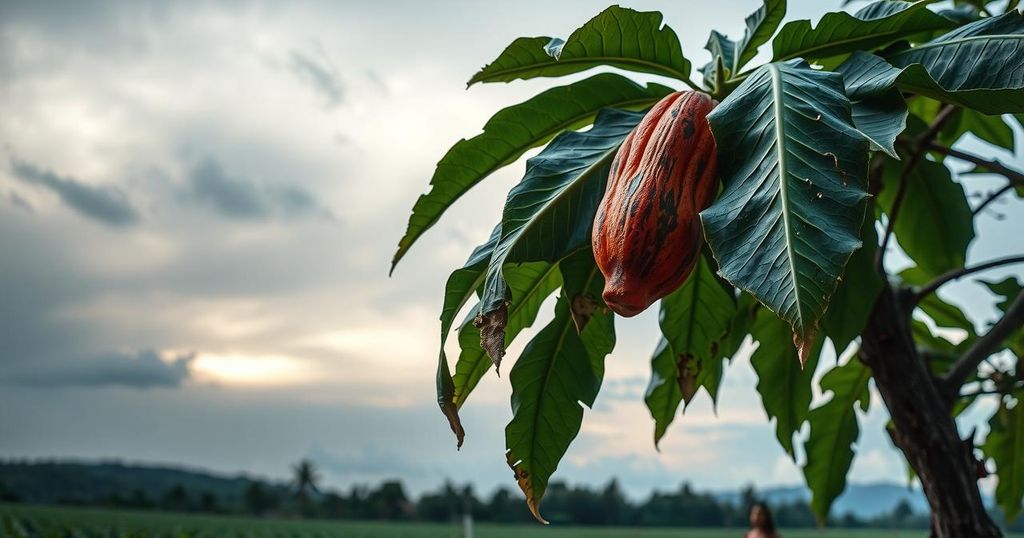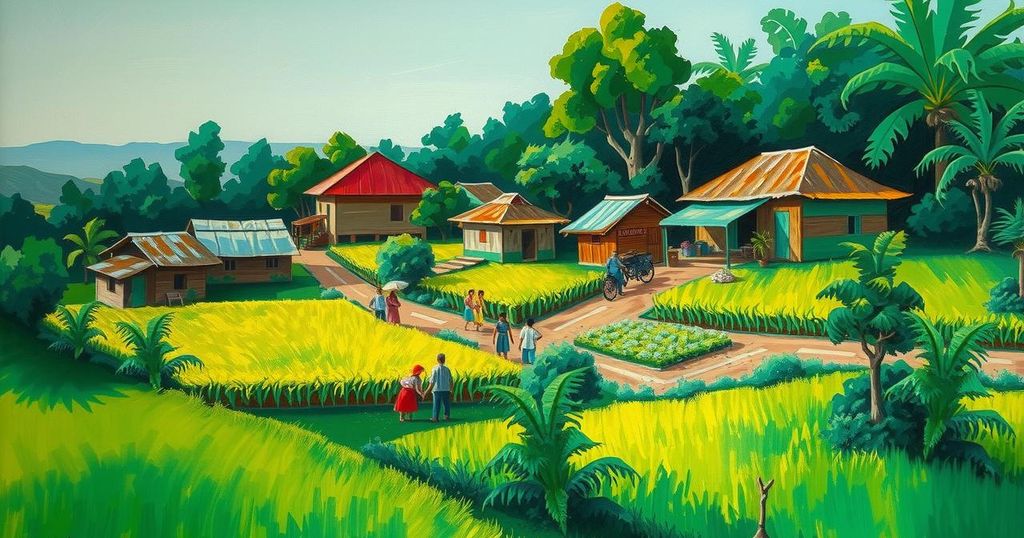The Impact of Climate Change on Valentine’s Day Chocolate Supply and Pricing
Valentine’s Day spending is predicted to exceed $27.5 billion in 2023, with chocolate making up a significant portion. However, cocoa production is declining due to climate change, resulting in rising chocolate prices. Cacao trees require specific conditions that are increasingly difficult to maintain, contributing to the challenges farmers face. There are adaptation strategies being pursued, and consumers can influence sustainability through their purchasing decisions.
In the United States, spending on Valentine’s Day continues to grow, with projections estimating a sum exceeding $27.5 billion in 2023. Of this expenditure, a significant portion is allocated to candy, specifically chocolate, which accounts for approximately 11.2%. This year, Americans are expected to consume around 58 million pounds of chocolate during this festive week. However, concerns are rising as cocoa production declines due to climate-related challenges, driving chocolate prices higher.
Cacao trees flourish in major regions such as Southeast Asia, Central and South America, and West Africa, which are primarily tropical and near the equator. These trees demand warm climates, high humidity, and dependable rainfall for optimal growth, illustrating their vulnerability to climate change. The maturation of cacao trees is a prolonged process requiring at least 6 to 10 years before they bear fruit, complicating matters as global warming continues to escalate.
Climate change is exerting a profound influence on cocoa production, introducing unpredictable weather patterns and increased climate variability. Extended dry spells contribute to water stress, adversely impacting yields, while excessive rainfall can lead to the proliferation of harmful fungi and pests. Meanwhile, soaring temperatures exacerbate moisture loss from soils, ultimately adversely affecting crop yields, particularly in West Africa, a dominant cocoa-producing region.
Farmers are exploring various adaptation strategies to counter these climate impacts. One approach involves cultivating new drought-tolerant and disease-resistant cocoa varieties currently being tested in diverse locations. Another method promotes agroforestry, where cocoa is cultivated alongside shade trees and other fruits, enhancing ecosystem resilience. Additionally, adopting advanced soil and water management techniques, along with digital tools for weather forecasts, can further help farmers adjust to climatic fluctuations.
Consumer behavior can significantly influence sustainable farming practices within the chocolate sector. By selecting certified sustainable brands, consumers can support ethical practices in cocoa production, ensuring farmers receive fair wages and adhere to environmentally sound methods. Researching sourcing practices is essential, alongside advocating for policies promoting fair trade and climate health in the cocoa industry.
The surge in cocoa prices—over 300% in the past two years—is largely attributed to decreased yields in key producing regions like Cote D’Ivoire and Ghana, driven by adverse climate conditions and pest-related issues. This critical situation has prompted further increases in chocolate prices, affecting consumers as they seek to purchase gifts for their loved ones this Valentine’s Day.
In conclusion, climate change poses a serious threat to cocoa production, affecting both yields and prices. Adaptive strategies and consumer choices play a crucial role in ensuring sustainability and supporting farmers. As visitations to local chocolate shops intensify this Valentine’s Day, it remains imperative to consider the broader implications of chocolate sourcing and production practices on the environment and communities.
Original Source: news.climate.columbia.edu




Post Comment